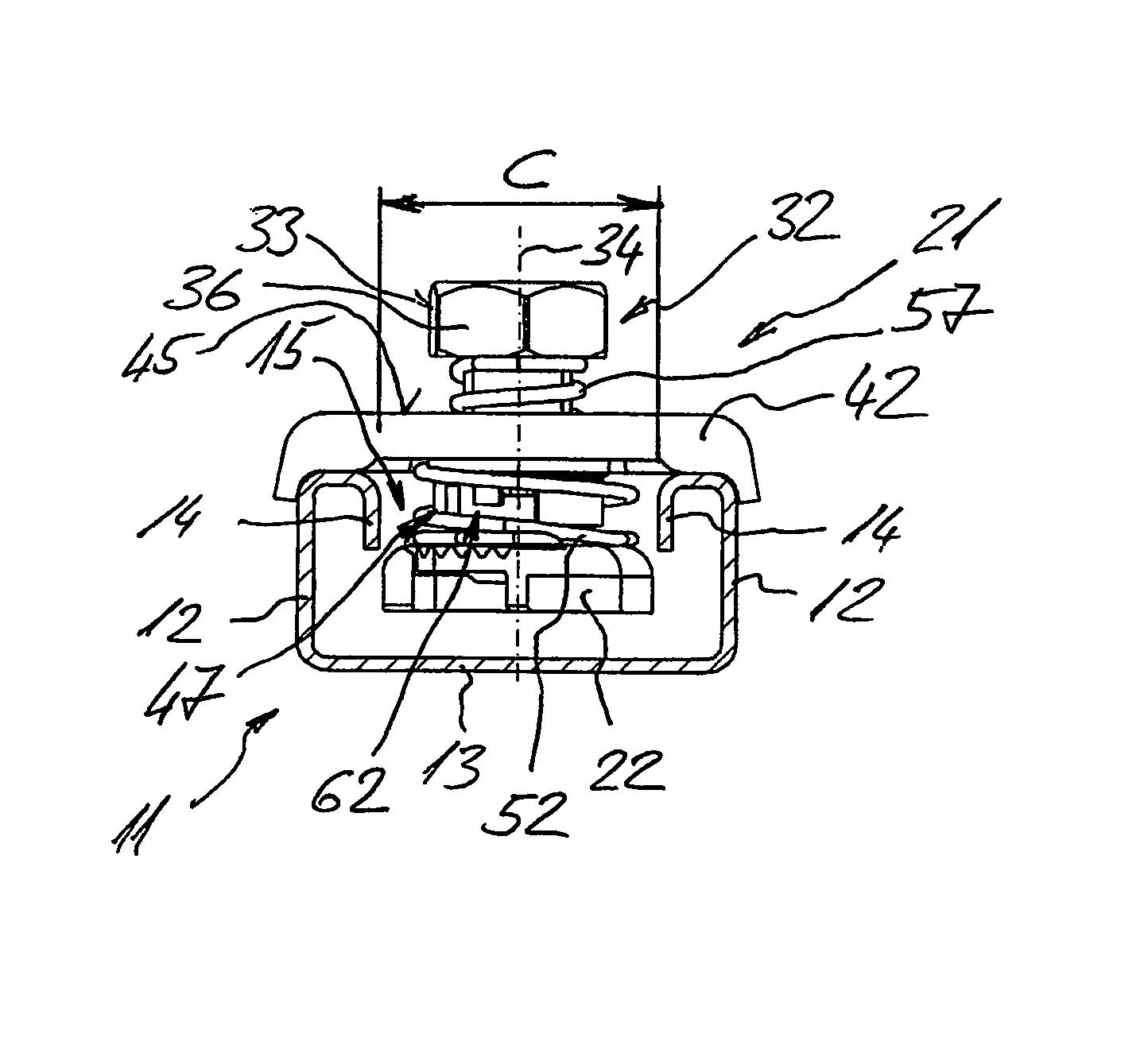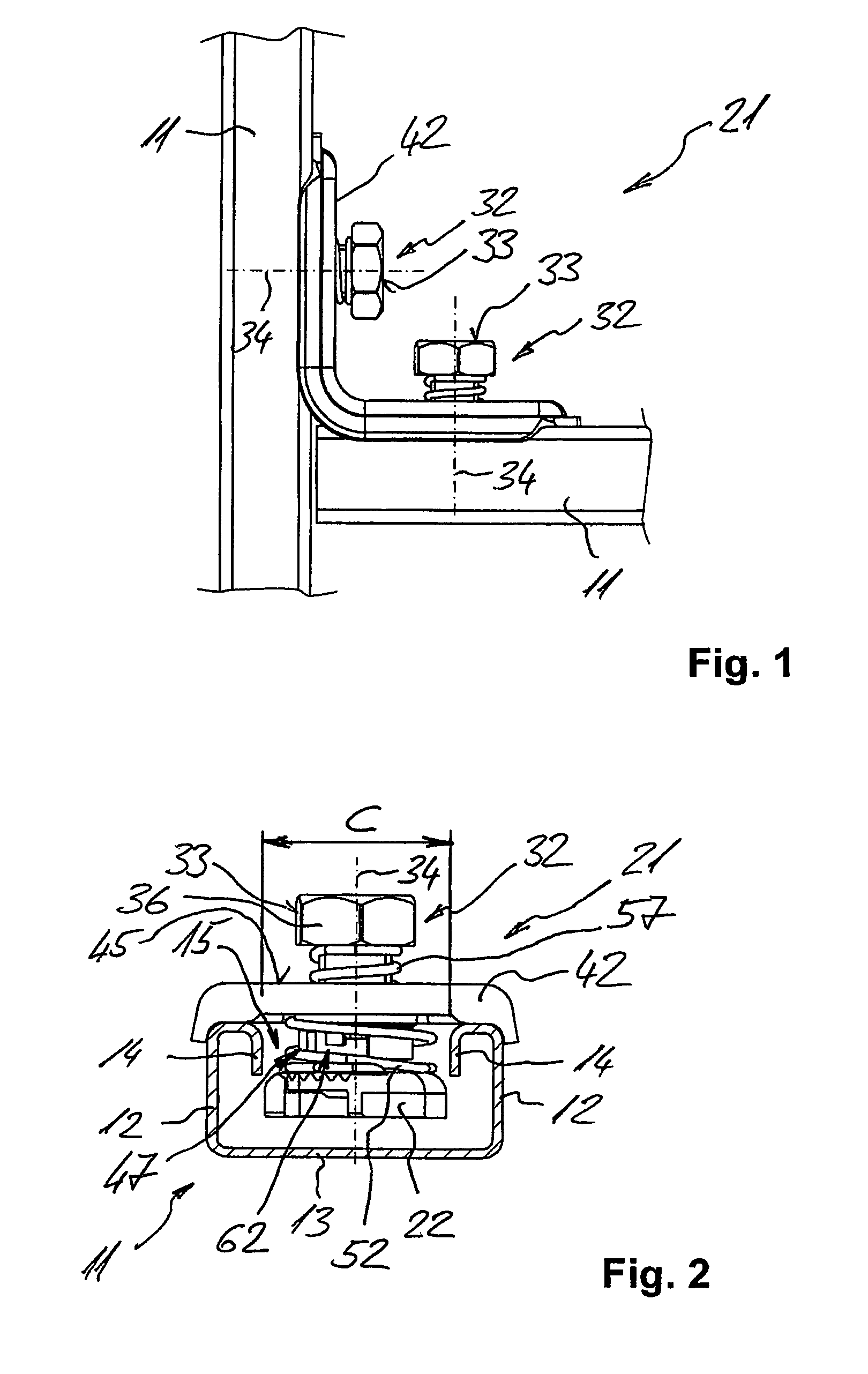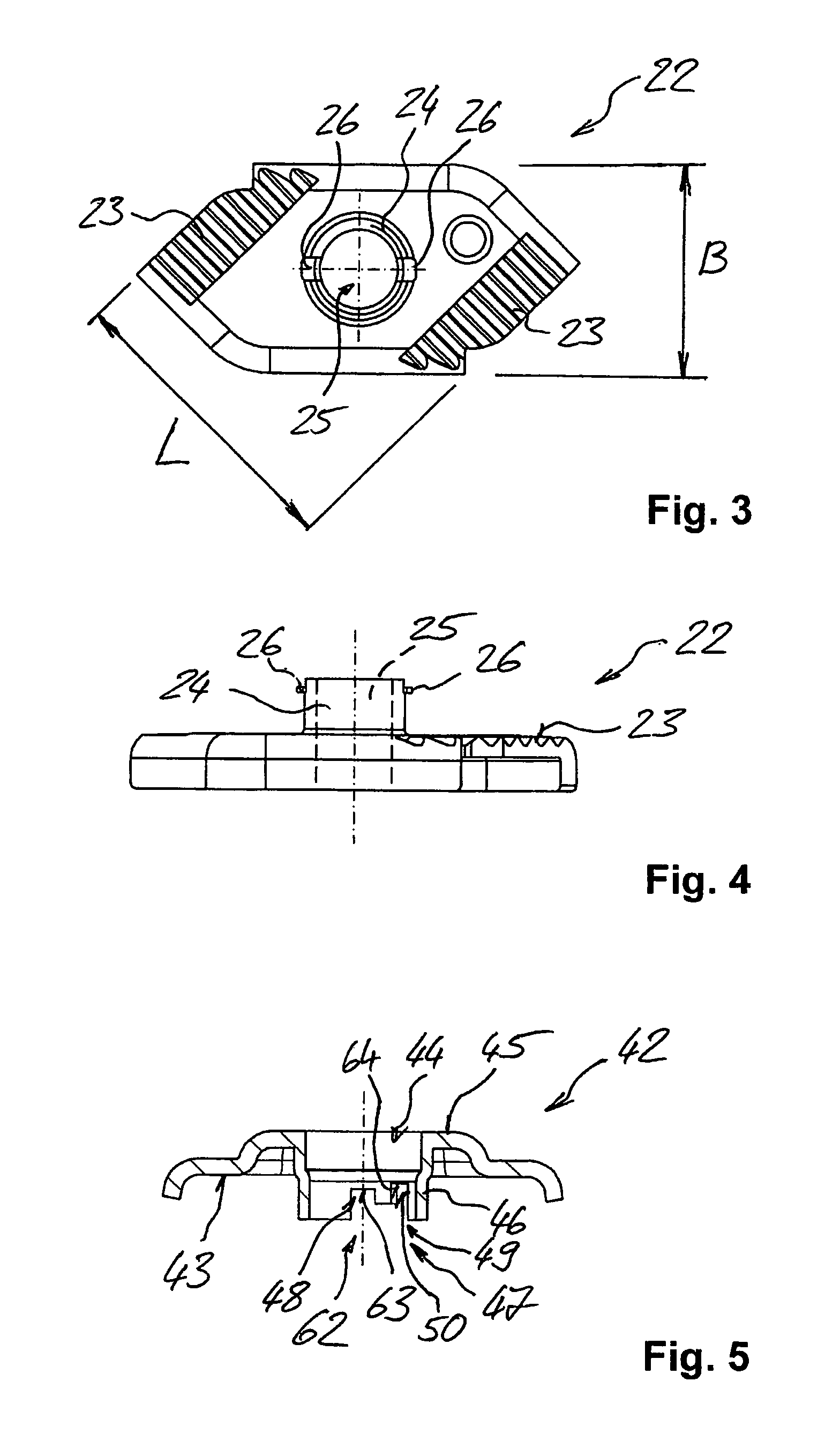Fastening device for mounting on a mounting rail
a technology of fastening device and mounting rail, which is applied in the direction of threaded fasteners, fastening means, screws, etc., to achieve the effect of simplifying the constructional design of the fastening device and simplifying the correct insertion
- Summary
- Abstract
- Description
- Claims
- Application Information
AI Technical Summary
Benefits of technology
Problems solved by technology
Method used
Image
Examples
Embodiment Construction
[0036]Fastening device 21 illustrated in FIG. 1 through 5 is used for connecting two C-shaped mounting rails 11.
[0037]Mounting rails 11 each have two mutually opposing side walls 12, a rear wall 13 joining these side walls 12, as well as a mounting opening 15 facing opposite this rear wall 13, bounded by rims 14, and extending along the longitudinal extension of mounting rail 11. Mounting opening 15 has a clearance width C extending transversely to the longitudinal extension of mounting rail 11 that is defined by the inwardly bent free ends of rims 14. Each mounting rail 11 encloses an interior space which is externally accessible through mounting opening 15.
[0038]Fastening device 21 has a rear-engagement member 22 having a width B that is smaller than clearance width C of mounting opening 15 in mounting rail 11, and a length L that is greater than clearance width C of mounting opening 15 in mounting rail 11. Clamping surfaces 23 of rear-engagement member 22 are toothed to facilitat...
PUM
 Login to View More
Login to View More Abstract
Description
Claims
Application Information
 Login to View More
Login to View More - R&D
- Intellectual Property
- Life Sciences
- Materials
- Tech Scout
- Unparalleled Data Quality
- Higher Quality Content
- 60% Fewer Hallucinations
Browse by: Latest US Patents, China's latest patents, Technical Efficacy Thesaurus, Application Domain, Technology Topic, Popular Technical Reports.
© 2025 PatSnap. All rights reserved.Legal|Privacy policy|Modern Slavery Act Transparency Statement|Sitemap|About US| Contact US: help@patsnap.com



